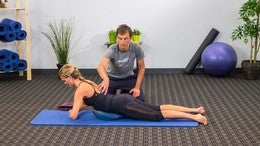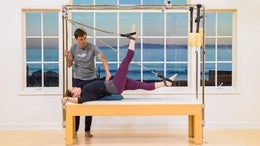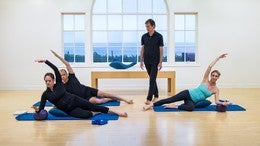Premium workshop
You can view a 2 minute preview. For details, scroll down below the video.
Description
Objectives
- Look at movements that will mobilize the entire body for daily maintenance
- Learn movements that will help disassociate the thoracic cavity from the pelvis for better rotation in the spine
- Learn how to give more information to the head after trauma like concussions or migraines
About This Video
Comments
I've been a huge fan of the Oov and fortunate to have taken foundations, equipment and 3D assessments. I'm always informing my practice with work with my clients and learning, but what actually was most helpful to my deepen my knowledge was an awful ski accident 5 weeks after I took the 3D assessment course and being able to personally experience how AMAZINGLY INCREDIBLE the Oov helped me heal. Obviously there was a lot of downtime/studytime prior to actually moving much.... but, I could really understand the tension relationships and how my body shifted and refound stability. Every medical professional I saw was a bit dumbfounded with my progress. Not that you need an injury, but dedicate your time to your own daily Oov practice and take AS MANY COURSES AS POSSIBLE, then audit. Travel wherever you need to to do it, you WILL NOT be disappointed!! The blush does not fall of this rose, it only deepens and you'll be forever changed!
Looking back at the workshops I attended, I took this idea partially away but then some of the instructors I worked with were still giving corrections, and so I've been sort of half-doing it. I'm getting it now!
You need to be a subscriber to post a comment.
Please Log In or Create an Account to start your free trial.






















